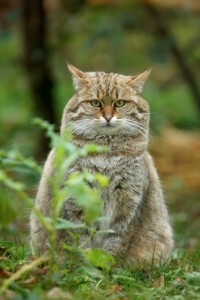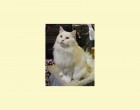
Wild Cats of the World
Small wild cats are found all over the world including the Americas, Europe, Asia and Africa. Most of these cats are endangered and many are at the point of extinction. Three small wild cats are currently listed as endangered on the International Union for Conservation of Nature, IUCN List of Threatened Species. The fishing cat, flat headed cat and the Scottish wildcat.
What Does Endangered Mean
A wild cat is considered “critically endangered” when it is facing an extremely high risk of extinction in the immediate future, and there has been a reduction of at least 80% of the population over the past 10 years. When wild cat has been labeled “critically endangered,” it has been determined that the species or subspecies has less than 50 mature cats in existence.
A wild cat is considered “endangered” when it is at high risk of extinction in the near future, and there has been a 50% reduction in the population of the species over the past 10 years. When a wild cat is labeled “endangered,” that species or subspecies has less than 2500 mature individuals in existence.
Small wild cats also include the wild cats (felis silvestris grampia) from Asia, Africa and Europe. Approximately 22 subspecies of wild cats have been grouped either as forest wildcats, steppe wildcats or bay (bush) wildcats. Wild cats are much smaller than big cats such as lions and tigers but larger than house cats. To raise awareness of wild cats in the world I am profiling a wild cat each month for readers.
Scottish Wildcat
Latin name: Felis silvestris grampia
IUCN status: Endangered
(Although some report less than 100 are in existence and are critically endangered).
 The Scottish wildcat has the appearance of a very muscular tabby with a thick coat of brown striped fur. True Scottish wild cats are about 50% larger than a domesticated cat.
The Scottish wildcat has the appearance of a very muscular tabby with a thick coat of brown striped fur. True Scottish wild cats are about 50% larger than a domesticated cat.
The wildcat has lived in Britain, however human persecution and habitat destruction led to its extinction in England, Wales and southern Scotland by 1880. The remote Highlands provided a last refuge for this endangered cat.
The Scottish wildcat is now fully protected by law and is recognized as a separate subspecies, Felis silvestris grampia, confined to the Central and Northern Highlands of mainland Scotland. Their preferred habitat is upland forest with young trees, moorland, scrub and hill ground where they can lie up during the day in a den among rocky cairns, old fox earths, badger setts, or among tree roots. The wildcat is a useful predator of pests such as rabbits and rodents and will also eat birds, reptiles, amphibians and insects and may scavenge fresh road casualties. These cats have little fear of the water and will occasionally fish from the edge of a river or pond by scooping up passing fish with their claws.
Solitary and nocturnal they are most active at dawn and dusk. Mating occurs during February and 2-6 kittens are born 62 to 68 days later. Females can have only one litter per year. The family breaks up after about 5 months, when the young leave to establish their own home range.
Snares and traps are estimated to account for up to 92% of their deaths in the wild and Scottish wildcats are illegally persecuted as pests. Domesticated cats gone feral can interbreed with Scottish wild cats, and produce fertile hybrid cats. Few genetically pure populations are left.
Where can you see Scottish Wild Cats
Four Scottish wildcats live at the Edinburgh Zoo and are part of the European Stud Book Programme (ESB).
To learn more about Scottish wildcat conservation:




Leave a Reply
You must be logged in to post a comment.